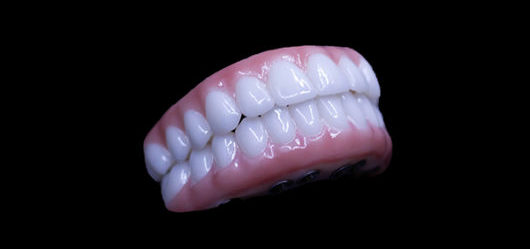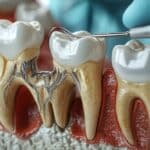The dental implant procedure is the placement of permanent, prosthetic teeth that look and function like the real thing. The implant procedure is designed to be painless and provide a smile that lasts a lifetime. When placed by an experienced team of dental implant professionals, the procedure is one of the safest and most successful in dental and cosmetic practices.
There are 3 main parts of dental implants: the implant, the abutment, and the arch (or crown).
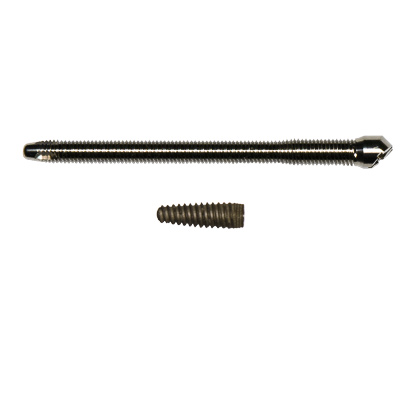
Implant
The implant is a screw-like structure made of titanium that is embedded into the bone. The bone fuses with the implant through a natural process known as osseointegration. Traditional implants are embedded into the patient’s jawbone. But patients with severe bone loss in the upper jaw may receive zygomatic implants. Zygomatic implants are longer than conventional implants and are embedded in the zygoma (cheekbone)
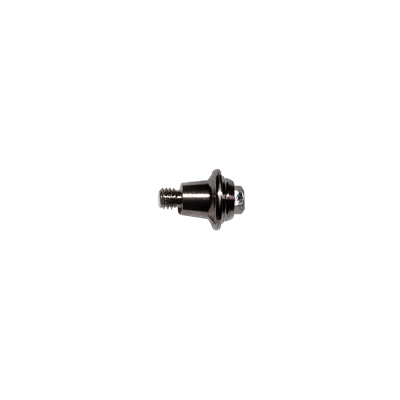
Abutment
The abutment is a connector that fastens the prosthetic teeth to the implant. A small screw runs through the prosthesis and into the abutment to keep it tight. Abutments are often angled to allow for correct placement of the prosthesis onto a slanted implant.
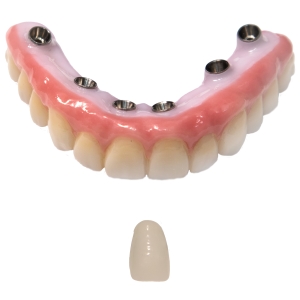
Arch or Single Crown
Also known as the “tooth” or “prosthesis”, the crown should be designed to appear and be as strong as natural teeth. The best prosthesis are designed in a lab and custom fit for each patient. Prosthetic teeth designed for dental implants can be for a single tooth or a full set of teeth, known as a “full arch.”
Why Do People Need Dental Implants?
1. To replace missing teeth: People experience tooth loss for many reasons. Some of these reasons include decay, gum (periodontal) disease, anodontia, medications, chemotherapy, drugs, or injury. Many who experience tooth loss choose to replace the lost or decaying teeth with dental implants.
- For eating: Being able to bite and chew through a variety of foods is necessary for consuming necessary vitamins and nutrients. While dentures only restore up to 25% of original bite strength, dental implants often restore 80-100% of a patient’s original bite strength after the healing period.
- For self-confidence: Those with lacking or unsightly teeth often face anxiety of social situations, and experience greater isolation as a result. Strong and natural-looking teeth often help a person regain confidence to socialize.
2. To reinforce the structure of the jawbone: When a tooth is lost, the integrity of the jawbone underneath it is compromised. The neighboring teeth then begin to slowly drift. This also causes gradual degrading of the jawbone which in turn causes facial deformity. When a lost tooth is replaced with an implant, the integrity of the jaw is maintained.
What Are 2 Different Types of Dental Implant Cases?
Conventional Implants
In standard cases, dental implants are embedded within the jawbone. Conventional dental implants can be a single tooth, bridge, or a full arch.
- Single: Individual implants can be placed for the replacement of 1 tooth, such as a missing molar or anterior (front tooth). After the implant is placed, a healing period is needed before a final crown can be fitted on top.
- Bridge: A bridge fixes a crown or crowns over the area of a missing tooth or teeth. A bridge can be supported by implants or healthy teeth at each end.
- Full Arch: In many cases, a patient will choose to have a full set of upper or lower teeth replaced with what is known as a “Full Arch.” Arches are full sets of prosthetic teeth fixed onto four or more implants.
Zygomatic Implants
In cases of severe bone loss, zygomatic dental implants will be embedded into the cheekbone (zygoma). Zygomatic implants are only different from conventional implants in the method of embedding and the length of the implant. This method is used to replace the teeth in the upper jaw.
What Does It Mean to Have All Teeth Placed on Four Implants?
When a full mouth of teeth are restored on four dental implants, this refers to a full bridge prosthetic bridge being anchored in place on four dental implants. The four represents the number of implants on which the prosthetic teeth are fastened. However, dental surgeons may choose to use more than four implants to give the prosthetic teeth greater purchase and support. At New Teeth Now, we believe more accurate nickname for full arch of dental implants is All-on-X.
How Are Dental Implants Placed?
A CT-scan is taken to give doctors a 3D image of the patient’s teeth and bone structure. The doctor and patient then have a consultation to discuss their personalized treatment plan.
During the dental implant procedure, all remaining teeth are pulled to make way for the implants. This could be one tooth if the patient is receiving a single implant, or all upper or lower teeth if the patient is receiving a full arch procedure.
Single Implant: If the bone or gum tissue located where an implant will be placed is infected, the infection must first be removed. Then new bone may be grafted until sufficient thickness and density is achieved. Bone grafting in the lower arch usually requires about three months and in the upper arch may need five to six months. When the bone is ready, the surgeon will place the implant. The implant will require three to six months to fuse with the grafted bone. Next, the abutment and crown are fastened onto the implant.
Full Arch: After the remaining teeth are pulled and all infection is removed from the gum tissue and bone, the surgeon smooths the bone around the area where the implants will be placed. Then, the implants are surgically fastened into the bone. Finally, the abutments and prosthetic teeth are tightened onto the implants. Many full arch procedures can be done in one day.
How Long Does a Full Mouth Dental Implant Procedure Take?
One day. Before the implant procedure takes place, a surgeon must ensure there is enough jawbone available for the placement of the implants. If special techniques are required, such as bone grafting, this could delay the process by three months or up to two years. Once the jawbone is confirmed as dense and thick enough, the implants can be placed and the prosthetic teeth can be fastened to the implants. This is often a two-day procedure, but at fully-equipped dental implant centers, such as New Teeth Now in Lakeland, FL, the procedure can be finished in as little as a few hours. Patients arrive in the morning for the New Teeth Now procedure and leave the same afternoon with a full set of implant supported teeth.
If a surgeon is skilled in the zygomatic implant technique, and a patient with bone loss is seeking an upper arch of teeth, the bone grafting process may be unnecessary. In these cases, the process can be shortened from months to just one day.
Although a new smile can be given in one day, a period of about half a year is then needed for the osseointegration process (the natural process of the bone fusing with the implants) to mature. Acrylic prosthetic teeth will be attached to the dental implants until osseointegration is complete, and then the permanent teeth will be placed.
Is Dental Implant Surgery Painful?
Since you’re asleep under general anesthesia you will feel no pain during the dental implant procedure. At the end of the procedure, while you’re still asleep, the surgeon will numb your mouth with long-lasting pain medicine that prevents discomfort for several hours after you wake up. You will also be given a prescription pain medicine for use at home, though most patients report not needing them. To learn more about dental implant procedures and pain, click here.
What Can I Eat after Dental Implant Surgery?
After the procedure, an implant recipient will be put on a soft diet to allow the implant healing process to mature. A soft diet can include the following foods:
- Soft fruits and vegetables
- Tofu
- Fish
- Eggs
- Soups with small pieces of meat
- Soft breads, pancakes, waffles, muffins
- Rice and pasta
- Yogurt and ice cream
- Generally, anything that can be easily cut with a fork
Chewy foods, such as steak, or foods that require force to bite into, such as an apple, can cause too much pressure to be applied to implants in the healing process. Also, food with small, loose pieces such as popcorn increase the risk of food getting stuck and causing infection.
How Long after Dental Implant Surgery Can I Eat Normally?
A dental implant recipient can expect to return to a normal diet after about 6 months of healing. After 6 months, the titanium implants should be properly fused with the jawbone and ready to function with the strength of a natural tooth.
Why Do I Need Two Sets of Teeth?
In your all-in-one-day procedure, you’ll be fitted with a set of “test-drive” acrylic teeth to use while the implants are healing. The test-drive set of acrylic teeth are fastened to the implants so they feel very similar to healthy natural teeth. After 6 months, you’ll receive your own permanent, final set of zirconia teeth. Here’s why oral surgeons choose to give an acrylic set before the zirconia set:
1. To allow time for healing: As your mouth has been introduced to new titanium implants, the bone needs time to properly fuse with the implants. Acrylic teeth are light weight, putting less strain on the healing implants. Acrylic also has shock absorbing qualities that help prevent damage to implants during the healing period.
2. To avoid gapping: After your procedure, your gums will shrink while healing. After six months, you’ll need a refitted arch to properly match with your gum-line. Otherwise, a gap may appear between the arch and the gums, leaving room for food to get stuck, which can lead to infection.
3. To get the right fit: As you chew and put pressure on your new teeth, you may find areas that don’t feel right and need adjusting. Acrylic teeth are easier to adjust than zirconia teeth. This process of adjusting the teeth will help determine exactly how to design and fit your permanent zirconia teeth.
4. To get the right color: You may need some time to decide which color of teeth suits you best. This waiting period will help you decide if you want a shade that is slightly brighter or slightly darker.
How Much Do Dental Implants Cost?
To learn more about the cost of dental implants, read our cost guide.
Do I Have Enough Bone for Dental Implants?
If you’ve been told you can’t get dental implants due to bone loss in your upper jaw, the zygomatic implant procedure can actually allow you to get the smile you want in one day. This procedure is designed specifically for patients with severe bone loss seeking an upper full arch of permanently attached teeth.
Most oral surgeons are not experienced in zygomatic implant placement. As you research, you may consider consulting Dr. Harley M. Richards, DDS and Dr. David M. Kirkpatrick, DMD, FACS who are leaders in placing zygomatic implants. According to dental implant suppliers, Dr. Richards and Dr. Kirkpatrick place more zygomatic implants than any other surgical center in the US.
Will I Need Bone Grafting?
If you are seeking a full arch of upper teeth, then you will not need bone grafting. In traditional implant dentistry, patients without enough bone for conventional implants would require bone grafting or sinus lift. This may add 6 months to a year to a patient’s treatment and has a low success rate. But the development of the one day zygomatic Implant procedure allows for the implants to be placed in the cheekbone, bypassing the need for bone grafting.

How Successful Are Dental Implants?
Because they are so durable and are designed to last your lifetime, dental implants are shown to have a success rate as high as 98%.
Dental Implants can vary in success rate depending on the materials used, surgeon experience, implant placement location, and maintenance. However, implants that are placed by surgeons with seasoned experience and are built with top quality materials should last a lifetime. The dental implant procedure is one of the safest and most predictable procedures in dentistry.
Implants rarely fail but poor home care or an accidental blow to the face may disturb proper healing.
How do implants stay tight?
Implants are fastened into the bone and then, through a six-month healing period, the natural process of osseointegration occurs. Osseointegration is the process of the bone fusing with the implant, as the bone would with the root of a real tooth.
How long do dental implants last?
Dental implants are much different than crowns, partials or other types of common dental work. The titanium implants and the zirconia teeth are designed to last a lifetime and be as durable as natural teeth.
What materials are used in dental implant procedures?
Most implant systems use titanium implants, but the prosthetic teeth may vary in material quality. The following teeth materials are some of the most common:

Plastic
Pros: Inexpensive
Cons: Not Durable

Acrylic
Pros: Less expensive and great for temporary fitting
Cons: Not durable enough for long-term placement

Acrylic/Metal
Pros: Metal frame inside adds durability
Cons: Often too heavy to feel natural

Porcelain
Pros: Harder, denser, less porous and more natural looking
Cons: No shock-absorbing qualities, which can make for an unnatural bite

Zirconia
Pros: Great aesthetic qualities and a hardness level just below that of diamond
Cons: More expensive
Are dental implants as strong as real teeth?
Yes, dental implants built with zirconia and titanium are designed to be as strong as healthy natural teeth. But implants created using other, cheaper materials cannot fully guarantee a lifetime of use.
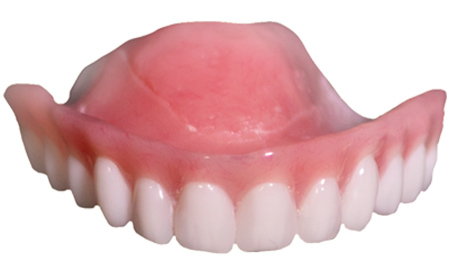
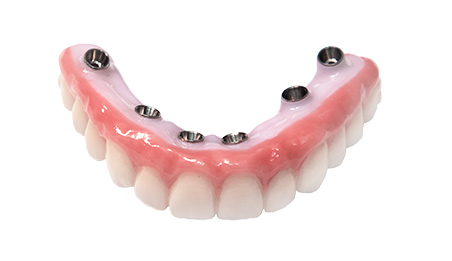
Dentures |
Dental Implants |
|---|---|
| Allow jawbone to deteriorate | Maintain jawbone and facial structure |
| Require frequent maintenance as the jawbone and denture wear | Last a lifetime |
| Often feel unnatural | Feel and work like natural teeth |
| Can slip, causing discomfort and slurred words | Fixed to the jawbone securely |
| Chewing capacity is restricted, and requires avoiding certain foods | Can chew and bite through any food |
| Initially cheaper, but less effective | Larger up-front cost, but more quality investment |
Dental Implants are the permanent, ideal solution for tooth loss and decay. Those who favor dentures often do so for the lower cost, yet pay the price of discomfort and occasional slippage, leading to embarrassment or slurred speech. Quality dental implants that are placed by an experienced surgeon and are properly maintained have a 98% success rate to never become loose.
Additionally, Implants reinforce the jaw structure as natural teeth do. Dentures add no reinforcement to the jawbone and allow for continued deterioration. This leads to warping of the lower region of the face. Before and after photos of dental implant patients, however, often show an improvement in jaw structure.
Interested in Dental Implants?
Learn how New Teeth Now can help transform your smile, health, and lifestyle.

